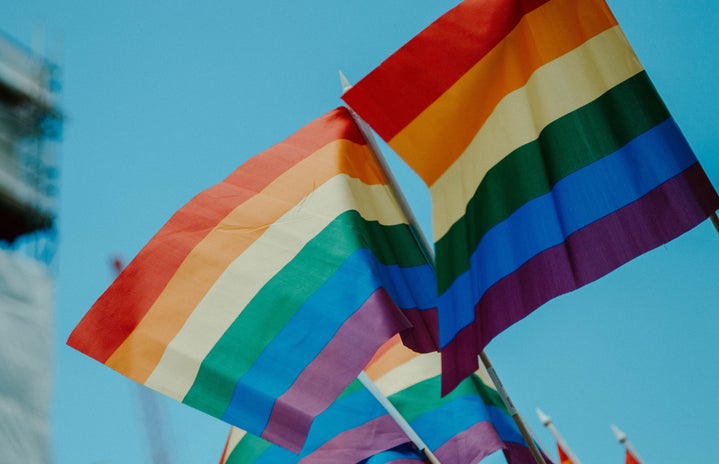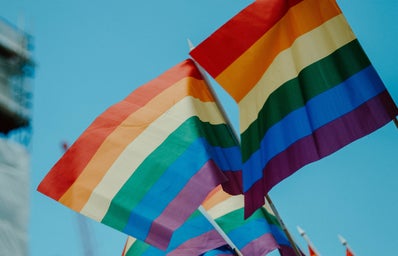The Walt Disney Company, a pillar of modern popular culture, has brought hundreds of fairytales to life on the cinematic screen. In recent years the company has begun to create openly diverse and inclusive stories such as Moana and Encanto, but historically they are guilty of reinforcing hegemonic patterns of power like heteronormativity.
One way this is depicted is through the queer coding of Disney villains, a concept The Tempest writer, Urquia, described as “…the process by which characters are depicted as having physical or behavioral traits that are usually associated with the LGBTQIA+ Community, even though the sexual orientation of the character is not specified.”
Legal contexts such as the Hayes Code throughout 20th century Hollywood cinema established barriers to creating queer characters unless they were depicted in a negative light, thus perpetuating the ideology that queerness is evil. Interestingly, depictions of both discriminatory and empowering representations of queerness are exemplified in The Little Mermaid through the queer coding of Ursula, the layered allegories used by the creators, and the films connection to historical and modern attempts of legal censorship.
The Little Mermaid’s sea witch, Ursula, is one of the most iconic Disney villains of all time, yet not many people know the intent and context behind her character’s design. Her appearance and mannerisms were based on Divine, a real life drag queen from Baltimore. Divine influenced Ursula’s make-up, hair, outfit, and even her low-pitched husky voice. While the intent behind the drag queens influence is nuanced, the impact was largely negative as it reinforced our culture’s internalization of the association with queerness as evil and immoral.
The designed queer nature of evil characters is easy to see when compared to the heroes’ appearances and aesthetics. The Little Mermaid’s protagonist, Ariel, is youthful, skinny, and glows with traditional perceptions of beauty. Ursula on the other hand has all the opposing elements, an undeniable representation of the “ugly” counterculture. For most of the 20th century Disney and other Hollywood studios were not legally permitted to include anything perceived as sinful or perversive unless the depiction was placed in a negative light. Thus, characters like Ursula were able to be coded as queer since they were made out to be the villains.
Legal censorship began in 1922 by the major production studios themselves as a strategy to ensure the government would not be able to amidst an atmosphere of intensifying government control in the film industry. The Motion Picture Production Code, commonly known as the Hayes Code, included moral guidelines and restrictions that films needed to follow.
These guidelines enforced films to portray morality through a heteronormative lens. Some of the standards were that the law needed to be respected, crime needed to be depicted as wrong, and Christianity was never to be depicted in a mocking manner. The legal restriction relevant to queer coding is that topics considered “sexually perverse” such as homosexuality and interracial relationships were not to be discussed or displayed on screen.
In this scenario, the law was used as a tool for injustice as it erased accurate and inclusive representation. This code began strict implementation in 1934 and lasted until 1966 when the Motion Picture Association of America (MPAA) decided to switch to its rating board of G, M, R, and X – now G, PG, PG-13, R, and NC-17. Nonetheless, the MPAA set the precedent that normalized queer coding. The Little Mermaid, released in 1989, was greatly influenced by these legal legacies, yet the creators were still able to reclaim parts of the story.
The Little Mermaid was surrounded by a company and a greater culture pushing for heteronormativity, however, there are a surprising number of allegorical queer elements present due to Andreas Deja, Hans Christian Anderson, and Howard Ashman – all members of the LGBTQ+ community who played a role in the making of the film. This constructed a space of tension within the film where the negative associations with sexuality are blended with compassionate connotations.
Andreas Deja is well known for animating a lot of Disney villains including Scar from The Lion King, Jaffar from Aladdin, and Gaston from Beauty and the Beast. He was not responsible for Ursula, however, he did animate her human alter ego in the movie, Vanessa. Deja is openly gay and has pointed to his sexuality as inspiration for some of his designs.
Furthermore, Hans Christian Anderson was the original writer of the story in the 19th century that inspired Disney’s adaptation. He is well-known as imposing an original dark overtone on the fairytales that we know today as cheerful stories. Anderson is now known to have been either bisexual or gay, which inspired him to write The Little Mermaid as a metaphor to his isolating out of body experience with his sexuality.
Later, when Disney picked up his story for the movie, Howard Ashman, an openly gay man, worked as one of the head lyricists. This means that the original story was intended to be an allegory about sexuality and the new version still had a queer man within the sphere of influence.
When analyzing the film through a queer lens, the parallels are hard to miss. The story explores queerness through a desire to love someone other than you are supposed to. Ariel’s story illustrates a socially unacceptable love where her sexuality is forbidden by her family. Another interesting element is that her desire for legs is symbolic of feeling like she was not born into the right body. These components of the film collide to create a site of contestation where The Little Mermaid represents the legacy of queer coding and a queer longing for belonging.
Censorship regarding sexuality has continued to be a dialogue to this day. While the Hayes code no longer remains, cultural attitudes toward what is appropriate in children’s media has stayed. Those against the LGBTQ+ community argue that they do not want their children exposed to sexuality, however, they do not seem to mind the heterosexual relationships or kisses Disney movies have always included. In this sense, it is clear that the underlying message is not that they are against seeing sexuality, but that they are against exposure to anything non-heteronormative.
One recent attempt at censorship against sexuality is the “Don’t Say Gay” bill in Florida. This bill aims to keep conversations about sexuality and gender outside of elementary schools and enables the possibility of lawsuits if the rules are broken. While this does not directly impact films, it represents the anti-LGBTQ+ sentiment still alive in our society that circulates through organizations like Disney.
Additionally, Disney has been under some heat because the current CEO, Bob Chapek, only publicly opposed the bill after his silence and decline to make a statement enraged the public and other employees. This became worse when information was leaked about how the company financially aided the legislators supporting the bill. Now Disney employees are staging walkouts to protest the company’s response to the “Don’t Say Gay” bill to make it clear that they support the LGBTQ+ community.
Unfortunately, laws like the “Don’t Say Gay’ bill are still utilized to push heteronormativity. However, this negative framework has been creatively reclaimed by LGBTQ+ creators through allegories and symbolism in their storytelling. While the Disney company, and our culture as a whole, still has a long way to go, the negativity associated with queer characters are slowly becoming decoded and reclaimed


